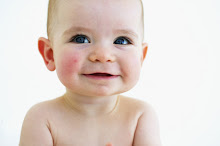From the summary:
Food insecurity during a child’s earliest years can cause potentially significant physical, mental and psychological damage to the individual. Furthermore, the impact on the successful healthy development of these children has long-lasting negative implications for the national economy. Food insecurity imposes indirect costs in a variety of ways. For example:
- Food insecurity increases the likelihood that a child will be judged to need special educational services; children who are not only food insecure but are classified as hungry are twice as likely as those who are not hungry to be receiving special education services. By the third grade, children who were food insecure in kindergarten experienced a 13 percent drop in their baseline reading and math test scores, compared to their food-secure peers.
- Children whose families experienced food insecurity while the child was a toddler are 3.4 times more likely to be obese at age 4 ½, which itself carries a number of costly health outcomes.
- Food insecurity impairs proper physical growth and development in young children and creates pathways for poor health. Poor health limits children’s ability to grow and learn, thus reducing adult earnings and increasing adult health costs.
Research shows that prevention is cost-effective and federal nutrition programs that mitigate early childhood food insecurity, such as WIC (Special Supplemental Nutrition Program for Women, Infants, and Children) and the Food Stamp Program, offer far greater returns than many remedial programs. For example, WIC saves between $1.77 and $3.13 in Medicaid costs for each dollar spent, and every five dollars of food stamps benefits creates nearly double that amount in local economic activity. Investment in alleviating early childhood food insecurity helps family budgets today, and it is one important factor in creating the workforce we need for the future.
Check out the brief and learn more at www.PartnershipforSuccess.org.
Have a wonderful holiday and a fantastic new year!























